Products
-
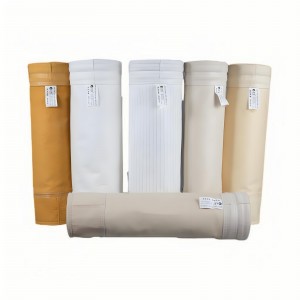
Polyester Filter Bags: The Benchmark in Industrial Filtration
In the filtration processes of industrial production and environmental protection, polyester filter bags, with their outstanding comprehensive performance, have become one of the most widely used filtration materials. As a filtration product made from polyester fibers (polyester), it not only possesses stable physical and chemical properties but also can meet the filtration requirements of various industries and media, providing a core guarantee for improving production efficiency and achieving pollutant compliance emissions.
The core advantages of polyester filter bags stem from the superior characteristics of the raw materials. Polyester fibers have high strength and excellent wear resistance, with a breaking strength of 5-7 cN/dtex, capable of withstanding the high-pressure airflow impact and dust friction in industrial filtration, and extending the service life by 30%-50% compared to ordinary filtration materials. At the same time, polyester has good thermal stability, with a continuous working temperature of up to 130°C and a momentary temperature resistance of 150°C, which can meet the temperature requirements of most industrial conditions, avoiding filter deformation or failure due to high temperatures. In terms of chemical stability, polyester has good tolerance to acids, alkalis, and organic solvents, requiring special treatment only in strongly alkaline environments, enabling it to handle complex media filtration in industries such as chemical, metallurgy, and construction.
From the structural design perspective, polyester filter bags are processed through various techniques such as needle punching, hot rolling, and coating, to meet different filtration accuracy requirements. Needle-punched polyester filter bags, with their three-dimensional structure, have a porosity of over 70%, capable of efficiently trapping dust particles, with a filtration accuracy of 1-5 μm; coated polyester filter bags have a layer of PTFE film on the base fabric, using the micro-porous structure of the film to achieve “surface filtration”, not only increasing the filtration efficiency to over 99.9%, but also effectively preventing dust from adhering to the filter, reducing the frequency of cleaning and energy consumption. Additionally, according to different application scenarios, polyester filter bags can be customized in various shapes such as circular, elliptical, and rhombic, suitable for various equipment such as pulse bag-type dust collectors and bag-type dust collectors, with convenient installation and excellent sealing performance.
In the current era of increasingly strict environmental protection trends, the environmental value of polyester filter bags is also prominent. Polyester materials can be recycled and reused, conforming to the concept of circular economy; its efficient filtration performance can effectively control the concentration of dust emissions, helping enterprises meet national environmental protection emission standards and reducing air pollution. Whether it is smoke dust removal in the thermal power industry, raw material crushing filtration in the cement industry, or tail gas purification in the chemical industry, polyester filter bags can, with stable performance, longer service life, and higher cost-effectiveness, become the ideal choice in the field of industrial filtration.
-

The application of liquid filter bags in the pharmaceutical industry
In the pharmaceutical industry, the safety, purity, and stability of drugs are directly related to patients’ lives and health. As a core link in the entire pharmaceutical production process, liquid filtration undertakes the important mission of removing impurities, microorganisms, and particulate contaminants. Liquid filter bags have become an indispensable key equipment in liquid processing scenarios of the pharmaceutical industry due to their high filtration precision, stable chemical compatibility, ease of replacement, and compliance with the strict standards of Good Manufacturing Practice (GMP). Starting from the special filtration requirements of the pharmaceutical industry, this article systematically sorts out the core application scenarios, selection key points, and technological development trends of liquid filter bags, providing comprehensive application references for industry practitioners.
I. Core Requirements for Liquid Filtration in the Pharmaceutical Industry: Equal Emphasis on High Purity and CompliancePharmaceutical production involves multiple links such as active pharmaceutical ingredient (API) synthesis, preparation manufacturing, injection preparation, and process water treatment. The liquid systems (such as liquid medicines, solvents, buffers, and process water) in each link must meet extremely high purity requirements, which put forward three core demands for filtration equipment:- Absolute Safety: Filter materials must not undergo chemical reactions with liquid medicines or release extractables (such as heavy metals and organic impurities). At the same time, they must be sterilizable (e.g., withstanding 121°C moist heat sterilization or γ-ray sterilization) to avoid introducing secondary pollution;
- Precise Filtration Precision: According to different drug types (such as oral preparations, injections, and biological products), precise filtration from the micrometer level (e.g., 1-20μm) to the sub-micrometer level (e.g., 0.22μm) must be achieved. Among them, 0.22μm filtration is regarded as a key standard for “sterile filtration”, which can effectively retain microorganisms such as bacteria and fungi;
- Strict Compliance: The production process of filter bags must comply with GMP standards and have a complete quality traceability system (such as material certification and batch test reports). At the same time, they must meet the requirements of international regulatory authorities such as the U.S. Food and Drug Administration (FDA) and the European Medicines Agency (EMA) to ensure that drugs can pass the compliance review of the global market.
By using inert polymer materials such as polypropylene (PP), polyester (PE), and polytetrafluoroethylene (PTFE), combined with processes like hot-melt welding and silicone-free sealing, liquid filter bags can fully meet the above requirements and become one of the preferred solutions for liquid filtration in the pharmaceutical industry. -
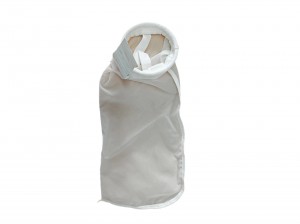
The application of liquid filter bags
In the intensive processing link of food and beverage production, the application of liquid filter bags is more segmented, requiring precise matching of filtration precision and material according to specific process requirements. Taking beer brewing as an example, the fermented beer contains impurities such as yeast cells and protein precipitates. Direct filling without filtration will cause turbidity and sediment in the beer, affecting its shelf life and drinking experience. At this point, the use of beer-specific filter bags (usually polypropylene membrane filter bags with a precision of 1-5 microns) can efficiently remove suspended impurities without damaging the flavor substances of the beer, maintaining the stable clarity of the beer and extending its shelf life.
The application of liquid filter bags is also crucial in dairy production. For instance, in the pretreatment of raw milk before yogurt fermentation, filtration is required to remove mechanical impurities and whey protein clots from the raw milk, preventing these impurities from affecting the activity of fermentation strains and the texture of the yogurt. At this stage, the selection of sanitary-grade polypropylene filter bags (equipped with food-grade sealing rings and complying with 3-A Sanitary Standards) not only achieves efficient filtration but also meets the strict requirements of dairy production for equipment cleanliness, preventing cross-contamination.Filtration Before Finished Product Filling: The “Final Check” for QualityEven after multiple processing steps, trace impurities may still be introduced into food and beverages before the filling process due to factors such as pipeline wear and environmental dust. If these impurities enter the finished products, they will not only affect the consumers’ drinking experience but also trigger product complaints and brand trust crises. Therefore, “terminal filtration” before finished product filling is of vital importance, and liquid filter bags are the core equipment in this link.Taking bottled drinking water production as an example, the terminal filtration before filling usually uses sterile filter bags with a precision of 0.22-1 micron (such as polytetrafluoroethylene (PTFE) membrane filter bags). These filter bags can not only trap bacteria, microorganisms, and tiny particles in the water but also have sterilization resistance (such as steam sterilization and chemical sterilization), ensuring that the filled drinking water meets the requirements of the national standard GB 19298 “National Food Safety Standard for Packaged Drinking Water”. In the production of carbonated beverages, the terminal filtration requires the use of pressure-resistant and carbonic acid corrosion-resistant filter bags (such as polyester membrane filter bags) to prevent the filter bags from breaking due to the pressure of carbon dioxide gas, while ensuring that the filtered beverages are free of impurities and have a smooth taste.Core Points for Selecting Liquid Filter Bags in the Food and Beverage Industry- Material Compliance: Prioritize filter bags that comply with food contact material standards (such as FDA, EU 10/2011, and GB 4806) to prevent harmful substances in the material from migrating into food and beverages;
- Precision Adaptability: Select the appropriate filtration precision based on the characteristics of impurities in different process links (e.g., 20-50 microns for raw material pretreatment and 0.22-5 microns for terminal filtration). Avoid excessively high precision, which may lead to reduced filtration efficiency and increased costs, or excessively low precision, which cannot meet the filtration requirements;
- Hygienic Safety: For scenarios with extremely high hygiene requirements, such as dairy products and sterile beverages, sanitary-grade filter bags should be selected. These filter bags are equipped with food-grade sealing rings, and their surfaces are smooth and free of dead corners, facilitating cleaning and sterilization;
- High-Temperature and Corrosion Resistance: Choose filter bag materials with high-temperature and corrosion resistance according to the temperature (e.g., high-temperature fruit juice after pasteurization) and acidity/alkalinity (e.g., acidic beverages and alkaline syrups) of the liquid during the production process to prevent the filter bags from being damaged or degraded during use.
In conclusion, liquid filter bags in the food and beverage industry are not only “interceptors” of impurities but also “guardians” of quality. With the continuous improvement of consumers’ requirements for food and beverage safety and quality, and the continuous upgrading of industrial production processes, liquid filter bags will develop in the direction of higher efficiency, better compliance, and more customization, providing a more solid guarantee for the healthy development of the food and beverage industry. -
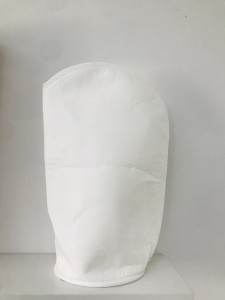
Key Applications of Liquid Filter Bags in the Food and Beverage Industry
In the food and beverage industry, “safety” and “quality” are core keywords throughout the entire production process. Liquid filtration, as a crucial link in the production chain, directly determines the purity and taste of the final products. Liquid filter bags, with their high-efficiency filtration performance, compliant material selection, and flexible adaptability, have become indispensable filtration equipment in this industry. From raw material processing to finished product filling, they provide protection for every drop of beverage and every portion of food.1. Raw Material Pretreatment: Blocking Impurity Contamination from the SourceThe starting point of food and beverage production often involves various liquid raw materials, such as drinking water, fruit juice concentrate, syrup, and brewing liquor. These raw materials may contain impurities that are invisible to the naked eye—sand and sediment in water, microbial residues, pulp debris and pectin particles in fruit juice, and crystalline impurities in syrup. If not filtered in a timely manner, these impurities will not only affect the taste of the products but also clog subsequent production equipment (such as pipelines, pumps, and filling valves), and even pose a risk of microbial growth.Liquid filter bags play the role of the “first line of defense” in this process. Based on the characteristics of different raw materials, the industry usually adopts food-grade polypropylene (PP) filter bags or polyester (PET) filter bags. These materials not only comply with international food contact material standards such as FDA (U.S. Food and Drug Administration) and EU 10/2011 but also possess acid and alkali resistance and high-temperature resistance (some models can withstand temperatures above 120°C). They are suitable for scenarios such as filtration of fruit juice before pasteurization and clarification of syrup after heating and dissolution. For example, in fruit juice production, the use of filter bags with a precision of 5-20 microns can effectively trap pulp fibers and colloidal particles, giving the fruit juice a clear and transparent appearance. At the same time, it prevents impurities from adhering to the tube wall of the evaporator in the subsequent concentration process, thereby improving the heat exchange efficiency of the equipment.2. Production Process Purification: Ensuring Process Stability and Product ConsistencyIn the intensive processing link of food and beverage production, the application of liquid filter bags is more segmented, requiring precise matching of filtration precision and material according to specific process requirements. Taking beer brewing as an example, the fermented beer contains impurities such as yeast cells and protein precipitates. Direct filling without filtration will cause turbidity and sediment in the beer, affecting its shelf life and drinking experience. At this point, the use of beer-specific filter bags (usually polypropylene membrane filter bags with a precision of 1-5 microns) can efficiently remove suspended impurities without damaging the flavor substances of the beer, maintaining the stable clarity of the beer and extending its shelf life.The application of liquid filter bags is also crucial in dairy production. For instance, in the pretreatment of raw milk before yogurt fermentation, filtration is required to remove mechanical impurities and whey protein clots from the raw milk, preventing these impurities from affecting the activity of fermentation strains and the texture of the yogurt. At this stage, the selection of sanitary-grade polypropylene filter bags (equipped with food-grade sealing rings and complying with 3-A Sanitary Standards) not only achieves efficient filtration but also meets the strict requirements of dairy production for equipment cleanliness, preventing cross-contamination. -
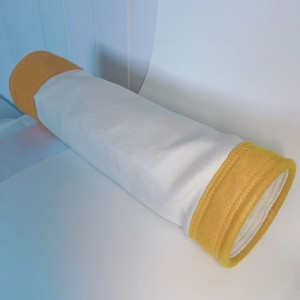
Glass Fiber Filter Bags: Technological Innovation Drives Industry Development
In this era of increasing environmental awareness, the control of dust pollution in industrial production processes has become a focus of attention for major enterprises. As an efficient dust removal device, glass fiber filter bags have unique performance advantages and occupy an important position in the field of industrial dust removal. With the continuous advancement of technology, the production technology of glass fiber filter bags is also constantly innovating, bringing new opportunities and challenges to its market development.
From a technical perspective, the production process of fiberglass filter bags has been continuously optimized. The traditional production of fiberglass filter bags mainly adopts the glass fiber needle-punched felt process. After cutting the glass fibers and conducting needle-punching to form the felt, a series of post-processing procedures are carried out to produce the filter bags. Although this process can meet basic filtration requirements, it still has certain limitations in terms of filtration accuracy, air permeability, and durability. In recent years, with the application of new materials and technologies, significant breakthroughs have been made in the production process of fiberglass filter bags. For example, using fiberglass expanded yarn as the raw material, a high-density thick-type fiberglass fabric is woven through a special weaving process. Compared with the traditional needle-punched felt, this fiberglass fabric has higher strength and better wear resistance, which can effectively extend the service life of the filter bags. At the same time, in terms of surface treatment technology, new progress has also been made. Through heat setting, pressure bonding, and treatment with waterproof agents such as PTFE (polytetrafluoroethylene) on the surface of the fiberglass fabric, a dense protective film is formed on the surface of the filter bag. This not only improves the waterproof and oil-resistant performance of the filter bag but also enhances its resistance to chemical corrosion, enabling it to better adapt to complex and variable industrial environments.
In addition to the improvement of production processes, the design of glass fiber filter bags has also been innovated. To enhance the filtration efficiency and reduce the operating resistance, some manufacturers have developed glass fiber filter bags with a gradient filtration structure. These filter bags are composed of multiple layers of glass fiber materials with different pore sizes. From the inlet to the outlet, the pore sizes gradually decrease. When the dusty gas passes through the filter bag, large particles of dust are first intercepted by the outer layer of larger pore size glass fiber materials, while small particles of dust are captured by the inner layer of smaller pore size materials. This gradient filtration structure can fully utilize the filtering advantages of different pore size glass fiber materials, achieve efficient filtration of dust of different particle sizes, reduce the accumulation of dust inside the filter bag, lower the operating resistance, and improve the cleaning effect. Moreover, some manufacturers have further enhanced the sealing performance and installation convenience of the filter bags by optimizing the sewing process and bag mouth design, thereby improving the overall performance of the products.
In terms of market application, glass fiber filter bags, due to their outstanding performance, are widely used in numerous industrial sectors. In the steel industry, during the steel smelting process, a large amount of hot and highly dusty exhaust gas is produced, which contains various metal oxides and impurities. Glass fiber filter bags can operate stably in high-temperature environments, effectively filtering the dust in this exhaust gas, ensuring compliance with emission standards, and recovering valuable metal dust to achieve resource recycling. In the cement industry, the kiln heads and kiln tails, as well as the raw material grinding and cement grinding processes, all generate a large amount of dust. Glass fiber filter bags, with their characteristics of high-temperature resistance, corrosion resistance, and high-precision filtration, have become the preferred equipment for controlling dust pollution in the cement industry, ensuring the environmental protection and sustainability of cement production. In the power industry, the flue gas produced by coal-fired boilers contains a large amount of fly ash and other particulates. Using glass fiber filter bags to filter this flue gas can significantly reduce dust emissions, reduce air pollution, and protect the normal operation of power generation equipment, thereby improving power generation efficiency. In addition, glass fiber filter bags have also been widely used in industries such as chemicals, ceramics, glass manufacturing, and waste incineration, providing effective solutions for dust pollution control in various industries.
With the increasingly strict environmental policies and the growing demand for environmental-friendly products in the market, the fiberglass filter bag market is showing a favorable development trend. On one hand, the configuration requirements for environmental protection equipment in newly-built industrial projects are constantly increasing, which prompts enterprises to increase their purchase of efficient dust removal equipment such as fiberglass filter bags. On the other hand, existing enterprises, in order to meet the increasingly strict environmental emission standards, also upgrade and replace their original dust removal equipment one after another, which brings a huge demand for renewal and upgrading in the fiberglass filter bag market. According to market research institutions’ predictions, in the coming years, the global market size of fiberglass filter bags will maintain stable growth, especially in emerging economy countries, as the industrialization process accelerates and environmental awareness improves, the prospects of the fiberglass filter bag market are broad.
However, the competition in the market has become increasingly fierce. With the growing demand for fiberglass filter bags, more and more enterprises have entered this field, making the competition even more intense. Each enterprise, in order to gain a foothold in the market, has increased investment in technological research and development, improved product quality and performance, reduced production costs, and strengthened brand building and market promotion. In this market environment, some enterprises with weaker technical capabilities and unstable product quality will face the risk of being eliminated. Therefore, for fiberglass filter bag manufacturing enterprises, how to stand out in the fierce market competition lies in continuous innovation, continuously enhancing the technical content and added value of products to meet the increasingly diverse needs of customers.
Looking ahead, with the continuous advancement of technology and the further improvement of environmental protection requirements, the fiberglass filter bag industry will embrace more development opportunities. On one hand, the continuous emergence of new technologies and materials will provide a broader space for the technological innovation of fiberglass filter bags. For instance, the application of nanotechnology and intelligent materials is expected to further enhance the performance of fiberglass filter bags, enabling new breakthroughs in aspects such as filtration accuracy, self-cleaning ability, and service life. On the other hand, as global attention to sustainable development continues to increase, green and environmentally friendly fiberglass filter bags will become the mainstream development direction in the market. Enterprises need to strengthen the research and application of environmentally friendly production processes, reduce energy consumption and pollutant emissions during the production process, and pay attention to the recyclability of products to achieve a win-win situation of economic benefits and environmental benefits.
The fiberglass filter bag, as an important equipment in the field of industrial dust removal, has a broad market prospect driven by technological innovation. However, at the same time, enterprises also need to face fierce market competition and constantly changing market demands. By continuously innovating and optimizing product performance, they can establish a foothold in the market and achieve long-term development. It is believed that with the joint efforts of all parties in the industry, the fiberglass filter bag will play a more important role in future industrial production and environmental protection. -
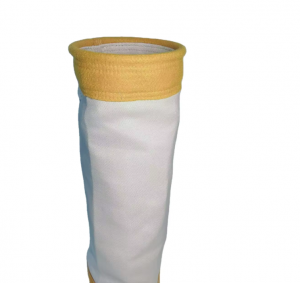
Fiberglass Filter Bags: The Backbone of Industrial Dust Removal
In the process of industrial production, dust pollution has always been a serious problem that needs to be solved urgently. It not only causes damage to the environment and affects air quality but also may pose a threat to the health of workers. To effectively address this challenge, various dust removal equipment and technologies have emerged, among which fiberglass filter bags play a pivotal role and can be called the backbone of industrial dust removal.
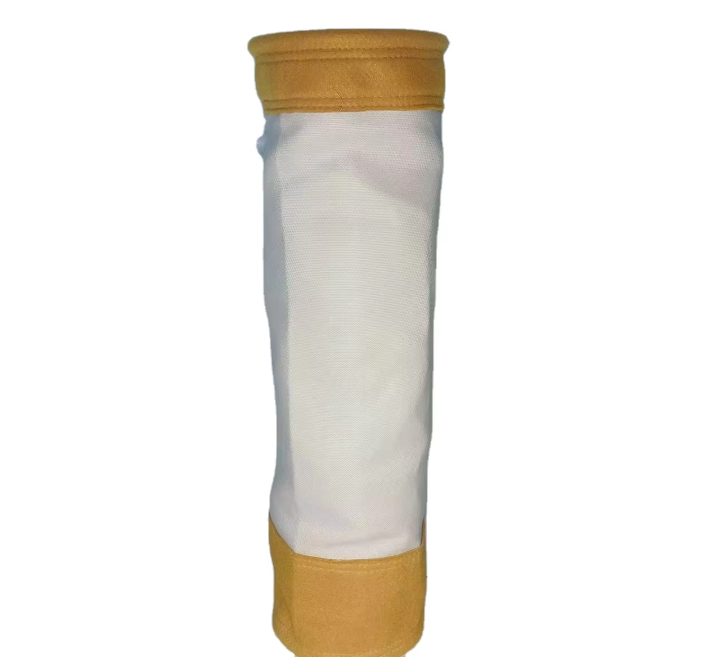 As the name suggests, fiberglass filter bags are filtering devices made mainly from glass fibers. Glass fibers have many excellent properties, laying a solid foundation for the high-performance of fiberglass filter bags. Firstly, glass fibers have excellent high-temperature resistance. In many industrial production scenarios, such as iron and steel smelting, cement manufacturing, and coal-fired power generation, a large amount of high-temperature flue gas is generated. Ordinary filtering materials may age, deform, or even lose their filtering function quickly in high-temperature environments, while fiberglass filter bags can operate stably for a long time at temperatures up to 260°C, and the instantaneous temperature resistance peak of some special models of fiberglass filter bags can even reach 300°C. This enables it to perfectly adapt to these high-temperature working conditions, ensuring efficient dust filtering under harsh temperature conditions, and guaranteeing the continuity of the production process and environmental protection requirements.Secondly, fiberglass filter bags have excellent chemical stability. Industrial waste gas has complex components and often contains various corrosive substances such as acids and alkalis. Glass fibers themselves are inert to most chemical substances and are not easy to react with these corrosive media. This characteristic allows fiberglass filter bags to maintain structural integrity and stable filtering performance when facing waste gas containing a large amount of corrosive gases generated in industries such as chemical industry and waste incineration. They will not cause filter bag damage or leakage due to chemical corrosion, thus ensuring the long-term stable operation of the dust removal system and reducing equipment maintenance costs and the frequency of filter bag replacement.Furthermore, fiberglass filter bags perform extremely well in terms of filtration precision. Their unique fiber structure forms fine filtering pores, which can effectively intercept dust particles of various particle sizes. Especially for inhalable particles that are extremely harmful to human health (such as PM10 and PM2.5), fiberglass filter bags can achieve efficient capture, stably controlling the emission concentration at an extremely low level. Some high-quality fiberglass filter bags can even reduce the emission concentration to below 10mg/m³, and in some working conditions, it can even reach 5mg/m³, fully meeting the increasingly strict environmental protection emission standards and providing a strong guarantee for enterprises to achieve green production.In addition to the above performance advantages, fiberglass filter bags also have good mechanical strength and wear resistance. In actual use, filter bags need to withstand the scouring of air flow, the friction of dust, and the mechanical force during the ash cleaning process. With its high tensile strength, fiberglass filter bags can maintain stable shape under these complex mechanical stresses, are not easy to break or damage, and thus have a long service life. This not only reduces the number of filter bag replacements, lowers the operating costs of enterprises but also improves the reliability and stability of the dust removal system, reducing the risk of production interruption caused by equipment failures.In various fields of industrial production, fiberglass filter bags play an indispensable role. In the iron and steel industry, a large amount of high-temperature flue gas containing pollutants such as metal oxides and dust is generated in various links from iron ore sintering, ironmaking to steelmaking. Fiberglass filter bags can effectively filter impurities in these flue gases in high-temperature environments, ensuring that emissions meet standards, and at the same time, recovering valuable metal dust to realize the recycling of resources. In the cement industry, the waste gas emitted from the head and tail of cement kilns has high temperature, high dust concentration, and complex components. Relying on its characteristics of high-temperature resistance, corrosion resistance, and high-precision filtration, fiberglass filter bags have become key equipment for controlling dust pollution in the cement production process, ensuring the environmental protection and sustainability of cement production. In the power industry, the flue gas generated by the combustion of coal-fired boilers contains a large amount of fly ash and other particles. Using fiberglass filter bags to filter these flue gases can significantly reduce dust emissions, reduce pollution to the atmospheric environment, and at the same time protect the normal operation of power generation equipment and improve power generation efficiency.In addition, fiberglass filter bags are also widely used in many industries such as chemical industry, ceramics, and glass manufacturing. In whatever industrial scenario, it solves the problem of dust pollution for enterprises with its excellent performance, helps enterprises realize clean production, and makes important contributions to environmental protection and sustainable development.With the increasingly strict environmental protection requirements and the continuous progress of industrial technology, fiberglass filter bags are also continuously innovating and developing. On the one hand, researchers are constantly exploring new production processes and material formulas to further improve the performance of fiberglass filter bags. For example, by improving the drawing process of glass fibers, the fibers become more uniform and delicate, thereby improving the filtration precision and air permeability of the filter bags; adopting new surface treatment technologies to enhance the waterproof and oil-proof performance of the filter bags, enabling them to better adapt to humid and oily industrial environments. On the other hand, to meet the special needs of different industries, fiberglass filter bags are also developing in the direction of diversification and personalization. For some application scenarios with special requirements for the size and shape of filter bags, manufacturers can provide customized services to produce filter bag products that meet customer needs.In conclusion, as one of the core equipment in the field of industrial dust removal, fiberglass filter bags have been widely used in many industrial industries and play an irreplaceable role with their advantages such as excellent high-temperature resistance, corrosion resistance, high-precision filtration, and good mechanical properties. With the continuous innovation and development of technology, it is believed that fiberglass filter bags will continue to play an important role in industrial production and environmental protection in the future, contributing more to the realization of green and sustainable development goals.
As the name suggests, fiberglass filter bags are filtering devices made mainly from glass fibers. Glass fibers have many excellent properties, laying a solid foundation for the high-performance of fiberglass filter bags. Firstly, glass fibers have excellent high-temperature resistance. In many industrial production scenarios, such as iron and steel smelting, cement manufacturing, and coal-fired power generation, a large amount of high-temperature flue gas is generated. Ordinary filtering materials may age, deform, or even lose their filtering function quickly in high-temperature environments, while fiberglass filter bags can operate stably for a long time at temperatures up to 260°C, and the instantaneous temperature resistance peak of some special models of fiberglass filter bags can even reach 300°C. This enables it to perfectly adapt to these high-temperature working conditions, ensuring efficient dust filtering under harsh temperature conditions, and guaranteeing the continuity of the production process and environmental protection requirements.Secondly, fiberglass filter bags have excellent chemical stability. Industrial waste gas has complex components and often contains various corrosive substances such as acids and alkalis. Glass fibers themselves are inert to most chemical substances and are not easy to react with these corrosive media. This characteristic allows fiberglass filter bags to maintain structural integrity and stable filtering performance when facing waste gas containing a large amount of corrosive gases generated in industries such as chemical industry and waste incineration. They will not cause filter bag damage or leakage due to chemical corrosion, thus ensuring the long-term stable operation of the dust removal system and reducing equipment maintenance costs and the frequency of filter bag replacement.Furthermore, fiberglass filter bags perform extremely well in terms of filtration precision. Their unique fiber structure forms fine filtering pores, which can effectively intercept dust particles of various particle sizes. Especially for inhalable particles that are extremely harmful to human health (such as PM10 and PM2.5), fiberglass filter bags can achieve efficient capture, stably controlling the emission concentration at an extremely low level. Some high-quality fiberglass filter bags can even reduce the emission concentration to below 10mg/m³, and in some working conditions, it can even reach 5mg/m³, fully meeting the increasingly strict environmental protection emission standards and providing a strong guarantee for enterprises to achieve green production.In addition to the above performance advantages, fiberglass filter bags also have good mechanical strength and wear resistance. In actual use, filter bags need to withstand the scouring of air flow, the friction of dust, and the mechanical force during the ash cleaning process. With its high tensile strength, fiberglass filter bags can maintain stable shape under these complex mechanical stresses, are not easy to break or damage, and thus have a long service life. This not only reduces the number of filter bag replacements, lowers the operating costs of enterprises but also improves the reliability and stability of the dust removal system, reducing the risk of production interruption caused by equipment failures.In various fields of industrial production, fiberglass filter bags play an indispensable role. In the iron and steel industry, a large amount of high-temperature flue gas containing pollutants such as metal oxides and dust is generated in various links from iron ore sintering, ironmaking to steelmaking. Fiberglass filter bags can effectively filter impurities in these flue gases in high-temperature environments, ensuring that emissions meet standards, and at the same time, recovering valuable metal dust to realize the recycling of resources. In the cement industry, the waste gas emitted from the head and tail of cement kilns has high temperature, high dust concentration, and complex components. Relying on its characteristics of high-temperature resistance, corrosion resistance, and high-precision filtration, fiberglass filter bags have become key equipment for controlling dust pollution in the cement production process, ensuring the environmental protection and sustainability of cement production. In the power industry, the flue gas generated by the combustion of coal-fired boilers contains a large amount of fly ash and other particles. Using fiberglass filter bags to filter these flue gases can significantly reduce dust emissions, reduce pollution to the atmospheric environment, and at the same time protect the normal operation of power generation equipment and improve power generation efficiency.In addition, fiberglass filter bags are also widely used in many industries such as chemical industry, ceramics, and glass manufacturing. In whatever industrial scenario, it solves the problem of dust pollution for enterprises with its excellent performance, helps enterprises realize clean production, and makes important contributions to environmental protection and sustainable development.With the increasingly strict environmental protection requirements and the continuous progress of industrial technology, fiberglass filter bags are also continuously innovating and developing. On the one hand, researchers are constantly exploring new production processes and material formulas to further improve the performance of fiberglass filter bags. For example, by improving the drawing process of glass fibers, the fibers become more uniform and delicate, thereby improving the filtration precision and air permeability of the filter bags; adopting new surface treatment technologies to enhance the waterproof and oil-proof performance of the filter bags, enabling them to better adapt to humid and oily industrial environments. On the other hand, to meet the special needs of different industries, fiberglass filter bags are also developing in the direction of diversification and personalization. For some application scenarios with special requirements for the size and shape of filter bags, manufacturers can provide customized services to produce filter bag products that meet customer needs.In conclusion, as one of the core equipment in the field of industrial dust removal, fiberglass filter bags have been widely used in many industrial industries and play an irreplaceable role with their advantages such as excellent high-temperature resistance, corrosion resistance, high-precision filtration, and good mechanical properties. With the continuous innovation and development of technology, it is believed that fiberglass filter bags will continue to play an important role in industrial production and environmental protection in the future, contributing more to the realization of green and sustainable development goals. -
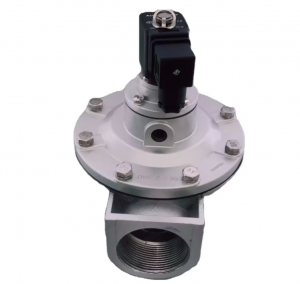
Technical Analysis and Application of DMK – Z – 50 Electromagnetic Pulse Valve
The DMK – Z – 50 electromagnetic pulse valve is a key component in numerous industrial applications, especially those related to dust removal and pneumatic control. This article delves deeper into its technical aspects, installation requirements, maintenance considerations, and a comparison with similar products in the market.Technical Specifications
- Voltage Options: The DMK – Z – 50 offers a variety of voltage options to suit different power supply requirements. It can be configured to operate on 24 VDC, 110V AC, 120V AC, 220V AC, or 230V AC (50/60 Hz). This flexibility makes it compatible with a wide range of industrial electrical systems. For example, in a factory with a predominantly 220V AC power supply, the valve can be easily integrated without the need for complex voltage conversion systems.
- Connection Size: With a DN50 (G2”) inlet and outlet threaded port size, the valve is designed to handle a significant volume of compressed air. This size is suitable for applications where a relatively large – scale air flow is required, such as in large – capacity dust collectors or high – volume pneumatic conveying systems.
- Working Pressure Range: It has a working pressure range of 0.1 to 0.8 MPa. This wide pressure range allows the valve to be used in diverse industrial scenarios. In low – pressure applications like some food and beverage production lines where gentle air pulses are needed, the valve can operate effectively at the lower end of the pressure range. On the other hand, in more demanding applications such as heavy – duty mining dust collection, it can handle the higher pressures without performance degradation.
- Diaphragm Material: The diaphragm of the DMK – Z – 50 is typically made of NBR (Nitrile Butadiene Rubber). NBR is known for its excellent resistance to oil, fuel, and abrasion, which are common factors in industrial environments. This material choice ensures that the diaphragm can withstand the harsh conditions of continuous operation, resulting in a long – lasting and reliable valve.
Installation Guide
- Pre – installation Checks: Before installing the DMK – Z – 50, it is essential to check the valve for any visible damage that may have occurred during transportation. Inspect the body, diaphragm, and electromagnetic coil for any signs of cracks, dents, or loose parts. Also, ensure that all the necessary installation accessories, such as gaskets and mounting brackets, are present.
- Cleaning the Pipeline: The air supply pipeline should be thoroughly cleaned before installing the valve. Any debris, dirt, or moisture in the pipeline can cause damage to the valve’s internal components or affect its performance. Use compressed air or appropriate cleaning agents to remove any contaminants.
- Mounting the Valve: The valve should be mounted in a location that allows for easy access for maintenance and inspection. Ensure that the valve is installed in the correct orientation, with the inlet and outlet ports properly aligned with the pipeline. Use the provided mounting brackets and fasteners to securely attach the valve to the support structure.
- Electrical Connection: When connecting the electrical wires to the electromagnetic coil, follow the wiring diagram provided with the valve. Make sure that the electrical connections are secure and properly insulated. If the voltage is above 36V, it is recommended to ground the valve to ensure electrical safety.
Maintenance Tips
- Regular Inspection: Periodically inspect the valve for any signs of wear or damage. Check the diaphragm for cracks, tears, or signs of excessive wear. Inspect the electromagnetic coil for any overheating or electrical issues. Look for any air leaks around the valve body or connections.
- Cleaning: Clean the valve regularly to remove any accumulated dust, dirt, or debris. Use a soft brush or compressed air to clean the internal and external parts of the valve. This helps to maintain the valve’s performance and prevent clogging of the air passages.
- Diaphragm Replacement: If the diaphragm shows signs of significant wear or damage, it should be replaced promptly. The replacement process is relatively straightforward, but it is important to use a genuine replacement diaphragm to ensure proper fit and performance.
- Testing: Periodically test the valve’s operation to ensure that it is functioning correctly. Use a pulse control instrument to send electrical signals to the valve and check that it opens and closes properly. Monitor the air flow and pressure to ensure that they are within the specified range.
Comparison with Similar Products
- Response Time: Compared to some other electromagnetic pulse valves in the market, the DMK – Z – 50 offers a faster response time. This means that it can open and close more quickly in response to an electrical signal, which is crucial for applications that require precise timing of air pulses. For example, in a high – speed dust collection system where rapid cleaning of filter bags is essential, the fast response time of the DMK – Z – 50 can result in more efficient dust removal.
- Durability: Thanks to its high – quality materials and robust construction, the DMK – Z – 50 has a longer service life compared to some similar products. The use of NBR diaphragms and aluminum alloy bodies contributes to its durability, making it suitable for use in harsh industrial environments where other valves may fail prematurely.
- Energy Efficiency: The DMK – Z – 50 is designed to be energy – efficient, consuming less power during operation. This is an advantage over some older – style or less – efficient pulse valves, as it helps to reduce the overall energy consumption of the system and lower operating costs.
In summary, the DMK – Z – 50 electromagnetic pulse valve is a technically advanced and reliable product. By understanding its technical specifications, following proper installation and maintenance procedures, and comparing it with other products, industrial users can make informed decisions about its use in their specific applications, ensuring optimal performance and long – term reliability. -
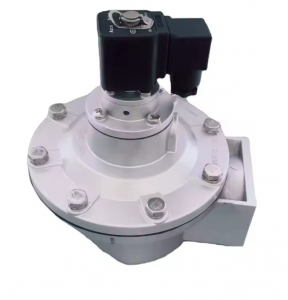
DMK – Z – 50 Electromagnetic Pulse Valve: A High – Performance Solution
In the realm of industrial dust collection and pneumatic control systems, the DMK – Z – 50 electromagnetic pulse valve stands out as a reliable and efficient component. This valve plays a crucial role in ensuring the smooth operation of various industrial processes, especially those related to dust removal and pneumatic conveying.Design and Structure
The DMK – Z – 50 is designed with precision and durability in mind. Its body is typically made of high – quality aluminum alloy, which not only provides excellent corrosion resistance but also makes the valve lightweight yet sturdy. The internal structure features a diaphragm that is the heart of the valve’s operation. The diaphragm is crafted from a special rubber compound that can withstand high pressures and frequent cycling, ensuring a long service life.The valve is equipped with an electromagnetic coil. When an electrical signal is received, the coil generates a magnetic field that activates the valve. This design allows for quick and accurate control of the valve’s opening and closing, which is essential for efficient system operation.Working Principle
The working principle of the DMK – Z – 50 is based on the interaction between the electromagnetic coil and the diaphragm. In its normal state, the diaphragm seals the valve outlet, preventing the flow of compressed air. When the pulse control instrument sends an electrical signal to the electromagnetic coil, the coil energizes and creates a magnetic force. This magnetic force pulls the armature, which in turn opens the diaphragm.Once the diaphragm is opened, compressed air can flow through the valve at a high velocity. This sudden burst of air is used for various purposes, such as cleaning dust – laden filters in a dust collector. When the electrical signal from the control instrument stops, the electromagnetic coil de – energizes, and the diaphragm returns to its original position, closing the valve and halting the air flow.Performance Features
- Fast Response Time: The DMK – Z – 50 offers an extremely fast response time, typically within milliseconds. This rapid response is crucial for applications where precise timing of air pulses is required, such as in high – speed dust collection systems. For example, in a large – scale industrial dust collector, the quick opening and closing of the valve ensure that each filter bag is cleaned effectively in a short period.
- High Pressure Resistance: It can withstand a wide range of working pressures, usually from 0.1 MPa to 0.8 MPa. This high – pressure tolerance makes it suitable for use in different industrial environments, whether it’s a low – pressure pneumatic system in a food processing plant or a high – pressure application in a mining dust collection setup.
- Long – Lasting Durability: Thanks to its high – quality materials and robust construction, the DMK – Z – 50 has a long service life. The diaphragm, in particular, is designed to endure millions of cycles without failure. In a continuous – operation dust collection system in a cement factory, the valve can operate for years with minimal maintenance, reducing downtime and maintenance costs.
- Energy – Efficient Operation: The valve is designed to be energy – efficient. It only consumes power when the electromagnetic coil is activated to open the valve. Once the air pulse is completed, the coil de – energizes, saving energy. This energy – saving feature is not only environmentally friendly but also helps to reduce the overall operating costs of the system.
-
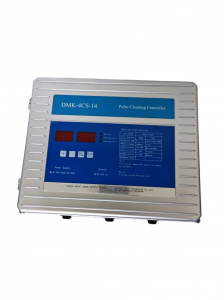
The DMK – 4CS – 14 pulse controller
This is a Pulse Cleaning Controller, model DMK – 4CS – 14, produced by a Shanghai – based company (SHANGHAI AASS TECHNOLOGY CO., LTD). It is often used in equipment like bag – type dust collectors. By sending out pulse control signals, it cleans filtering components (such as filter bags) at set times or as needed, ensuring the continuous and efficient operation of the dust removal system.
Key information:- Power Supply: Supports AC 185V – 264V, 50 – 60Hz alternating current, with an output of DC 24V/1A.
- Functions: The panel has a display window and operation buttons. It can set parameters related to ash cleaning (such as pulse width, interval, etc.), enabling automatic or manual ash – cleaning control to maintain the filtering performance of dust – removal equipment.
-
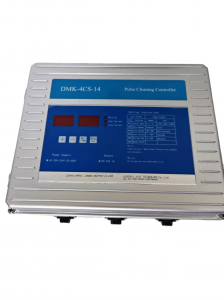
The DMK – 4CS – 14 controller
The DMK – 4CS – 14 controller has a built – in specific control program. Through the buttons and display window on the panel, the operator can set parameters related to cleaning, such as the pulse interval time (the time interval between two jets) and the pulse width (the duration of each jet). After setting the parameters, the controller will send out electrical signals regularly according to the set logic.Solenoid Valve Driving
When the controller sends out an electrical signal, the signal will be transmitted to the connected pulse solenoid valve. The pulse solenoid valve is a key executive component in the cleaning system. Before receiving the electrical signal from the controller, it is in a closed state, cutting off the path of compressed air. When receiving the electrical signal, the solenoid valve opens quickly, allowing compressed air to pass through.Compressed Air Jet
Compressed air is usually provided by an air source device (such as an air compressor) and is stored and stabilized by an air storage tank to ensure that there is compressed air with sufficient pressure and flow. When the pulse solenoid valve is opened, the compressed air will pass through the orifice on the injection pipe at a very high speed, forming a powerful pulse air flow.Filter Bag Cleaning
These high – speed pulse air flows are directly injected into the interior of the filter bag. Under the action of the pulse air flow, the filter bag will expand instantaneously, generating an outward tension. Since there are dust and other impurities attached to the surface of the filter bag, under the expansion of the filter bag and the impact of the air flow, the dust attached to the surface of the filter bag will be shaken off and fall into the ash hopper below, thus realizing the cleaning of the filter bag, restoring the filtering performance of the filter bag, and ensuring the continuous and efficient operation of the dust removal equipment. -
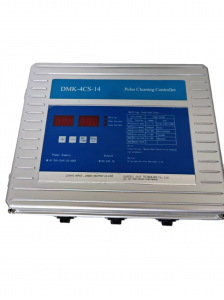
What is the cleaning principle of the DMK-4CS-14 controller?
The DMK – 4CS – 14 pulse cleaning controller is mainly used to control the pulse jet cleaning system. Its cleaning principle is based on the following key links:
Signal Control
The DMK – 4CS – 14 controller has a built – in specific control program. Through the buttons and display window on the panel, the operator can set parameters related to cleaning, such as the pulse interval time (the time interval between two jets) and the pulse width (the duration of each jet). After setting the parameters, the controller will send out electrical signals regularly according to the set logic.Solenoid Valve Driving
When the controller sends out an electrical signal, the signal will be transmitted to the connected pulse solenoid valve. The pulse solenoid valve is a key executive component in the cleaning system. Before receiving the electrical signal from the controller, it is in a closed state, cutting off the path of compressed air. When receiving the electrical signal, the solenoid valve opens quickly, allowing compressed air to pass through.Compressed Air Jet
Compressed air is usually provided by an air source device (such as an air compressor) and is stored and stabilized by an air storage tank to ensure that there is compressed air with sufficient pressure and flow. When the pulse solenoid valve is opened, the compressed air will pass through the orifice on the injection pipe at a very high speed, forming a powerful pulse air flow.Filter Bag Cleaning
These high – speed pulse air flows are directly injected into the interior of the filter bag. Under the action of the pulse air flow, the filter bag will expand instantaneously, generating an outward tension. Since there are dust and other impurities attached to the surface of the filter bag, under the expansion of the filter bag and the impact of the air flow, the dust attached to the surface of the filter bag will be shaken off and fall into the ash hopper below, thus realizing the cleaning of the filter bag, restoring the filtering performance of the filter bag, and ensuring the continuous and efficient operation of the dust removal equipment.In short, the DMK – 4CS – 14 controller precisely controls the opening and closing of the solenoid valve and uses compressed air pulses to impact and shake the filter bag, thereby removing the dust on the surface of the filter bag and completing the cleaning process. -
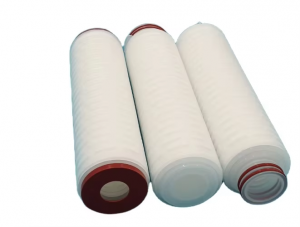
Unveiling the Filter Cartridge: A Silent Guardian in Filtration Systems
In the intricate world of filtration, whether for water purification, air handling, or industrial fluid processing, the filter cartridge stands as an unsung hero. These unassuming cylindrical components, like the ones pictured, play a pivotal role in maintaining the purity of substances flowing through systems.Filter cartridges boast a cleverly engineered pleated structure. This design isn’t just for show – the folds maximize the surface area available for filtration, allowing them to trap everything from tiny sediment particles in water to airborne dust in ventilation systems. In water treatment, they act as the first line of defense, sifting out rust, sand, and organic impurities that could compromise water quality. In industrial settings, they shield expensive machinery from damaging contaminants, ensuring smooth operations and reducing maintenance costs.Beyond water, their versatility shines in air filtration too. HVAC systems rely on them to clean incoming air, removing pollutants that affect indoor air quality. Even in specialized fields like pharmaceutical manufacturing, where precision is paramount, filter cartridges ensure fluids and gases meet stringent purity standards.Though their form is simple, their impact is profound. They quietly safeguard our daily water supply, keep industrial processes running efficiently, and contribute to healthier indoor environments. The filter cartridge, a testament to engineering ingenuity, proves that even the smallest components can have a giant role in our interconnected systems of health, industry, and daily life.